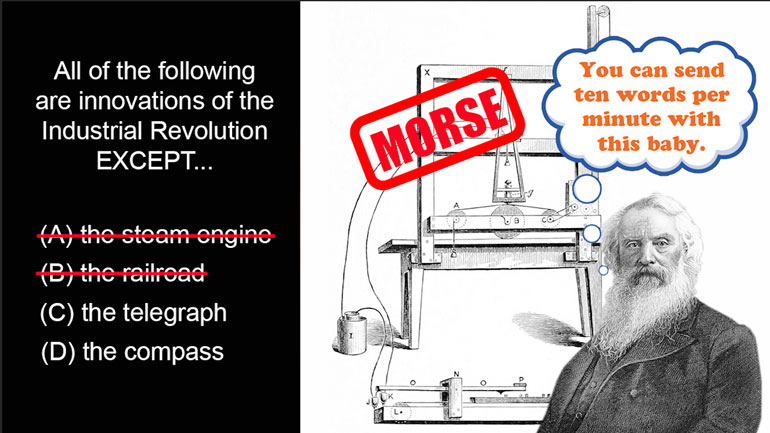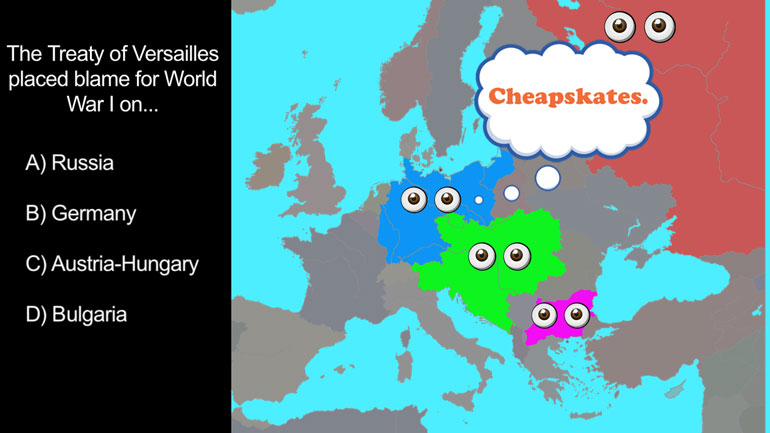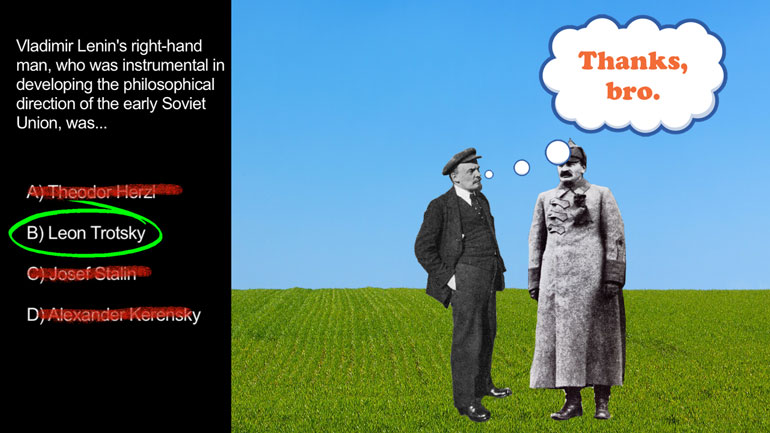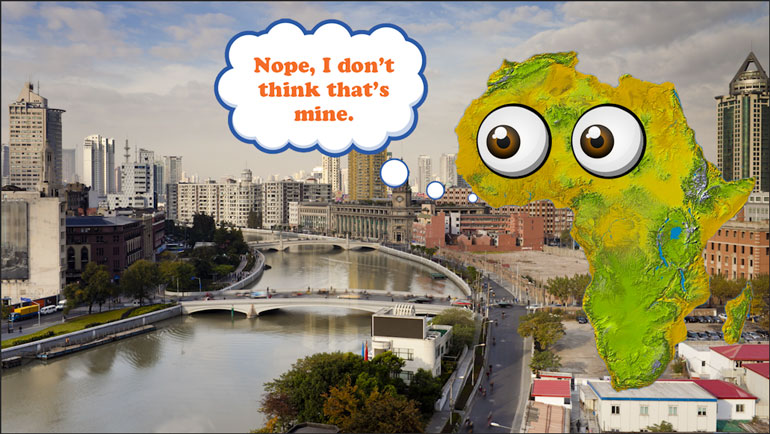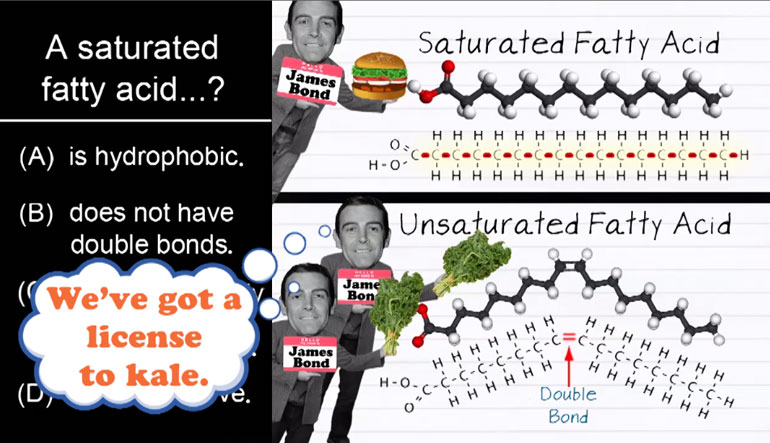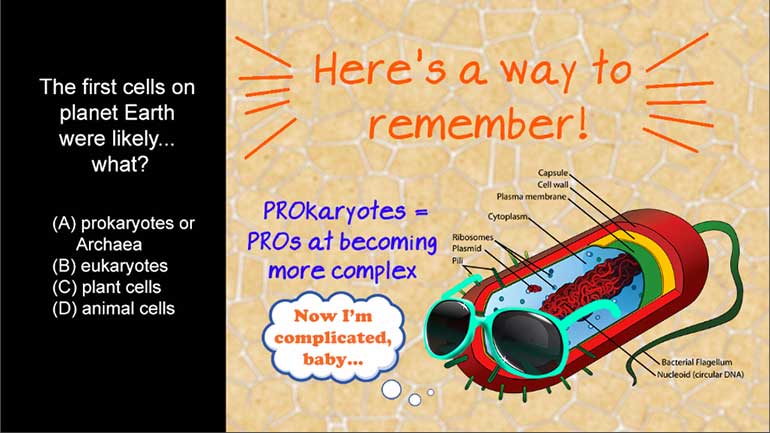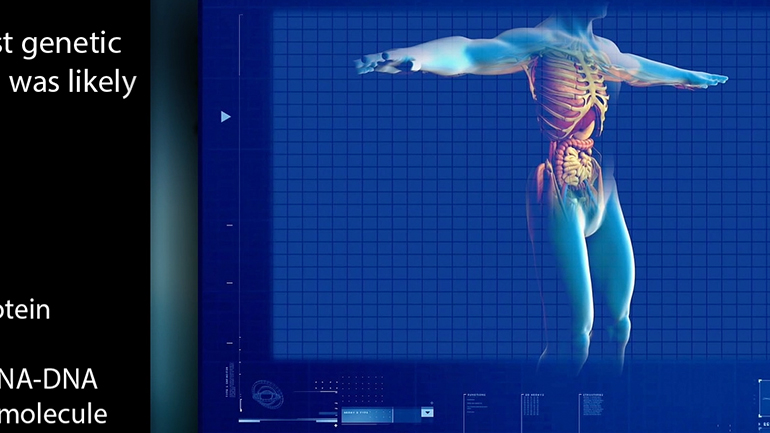ShmoopTube
Where Monty Python meets your 10th grade teacher.
Search Thousands of Shmoop Videos
AP World History Videos 31 videos
AP World History 1.2 Industrialization and Global Integration, c. 1750 to c. 1900. All of the following are innovations of the Industrial Revolutio...
AP World History 2.5 Industrialization and Global Integration, c. 1750 to c.1900. What was the relationship between abolitionist movements and wome...
AP World History 4.3 Industrialization and Global Integration, c. 1750 to c. 1900. What was the immediate cause of the First Sino-Japanese War?
AP World History 3.1 Technological and Environmental Transformations, to c. 600 B.C.E. 5 Views
Share It!
Description:
AP World History 3.1 Technological and Environmental Transformations, to c. 600 B.C.E. Artifacts reveal that the main two goods exported by the early ancient Greeks were...what?
Transcript
- 00:00
here's your shmoop du jour brought to you by the Trojan War.
- 00:07
which was won by some guys who were basically really good at playing hide [title page]
- 00:11
and seek. artifacts revealed at the main two goods exported by the early ancient
- 00:17
Greeks were what? [mumbling ]well
- 00:23
although we do have written accounts of life in ancient Greece such as Homer's
Full Transcript
- 00:28
The Iliad, most of our knowledge of their trade practices come through the
- 00:32
discovery of archaeological artifacts. and from the diary of some guy named Privyssyeus.
- 00:36
we totally disregarded that keep out warning on the cover. okay
- 00:41
let's look at each possible entry see what's shakin. while linen cloth and dyes
- 00:45
were in high demand in Greece, those items were mostly imported due to low [man smiles sitting behind a stack of towels and a plate of dye]
- 00:50
supply of materials and manufacturing capabilities. imported but not
- 00:55
important. not for us anyway so we get rid of a. how that option b? well when it
- 01:01
came to raising food such as wheat and cattle demand also outstripped supply.
- 01:05
wheat doesn't grow well in Greece's climate and rocky soil and there isn't a
- 01:10
lot of grassland available for grazing. rules which led to those commodities
- 01:13
being largely imported as well. next up is d bronze weapon and tools well Greeks
- 01:20
use them Greeks love them but Greeks didn't make. them and for the most part.
- 01:23
again natural resource wise bronze wasn't exactly growing on trees in the
- 01:28
Greek homeland. huh? that leaves us with option C olive oil and wine. yeah baby.
- 01:34
though it was hard to raise cotton wheat and cattle in Greece but grapes and
- 01:38
olives totally grow well there. also the ancient Greeks were great pottery
- 01:42
makers and pots are perfect containers for exporting olive oil and wine to [clay pot pictured]
- 01:47
their neighbors. many Greek shipwrecks containing thousands of pottery
- 01:51
containers known as amphora have been discovered with some of the olive oil
- 01:55
and wine still in them proving they were being exported to other countries. also
- 02:00
many shipwrecks from neighboring countries have been discovered with
- 02:03
empty amphora indicating they were heading back to Greece.
- 02:07
Apparently these guys had unlimited refills. [Jack sparrow stands on a beach]
Related Videos
AP Biology: Biological System Interactions Drill 1, Problem 1. Complete the sentence about a saturated fatty acid.
AP Biology: Essential Life Process Information Drill 1, Problem 1. If one parent is heterozygous for the sickle cell trait while the other par...
AP Biology: Evolution Drives the Diversity and Unity of Life Drill 1, Problem 1. The first cells on planet Earth were likely what?
AP Biology: Free Energy and Molecular Building Blocks Drill 1, Problem 1. Which statement incorrectly describes the properties of water?
AP® Biology: Evolution Drives the Diversity and Unity of Life Drill 1, Problem 2. What was likely the first genetic material?
